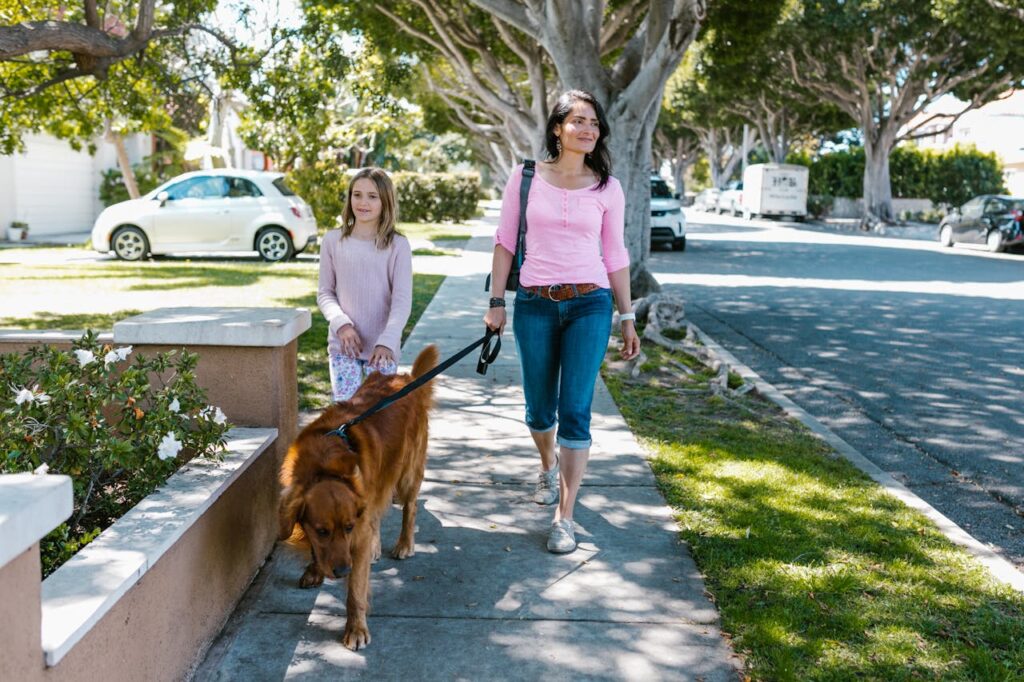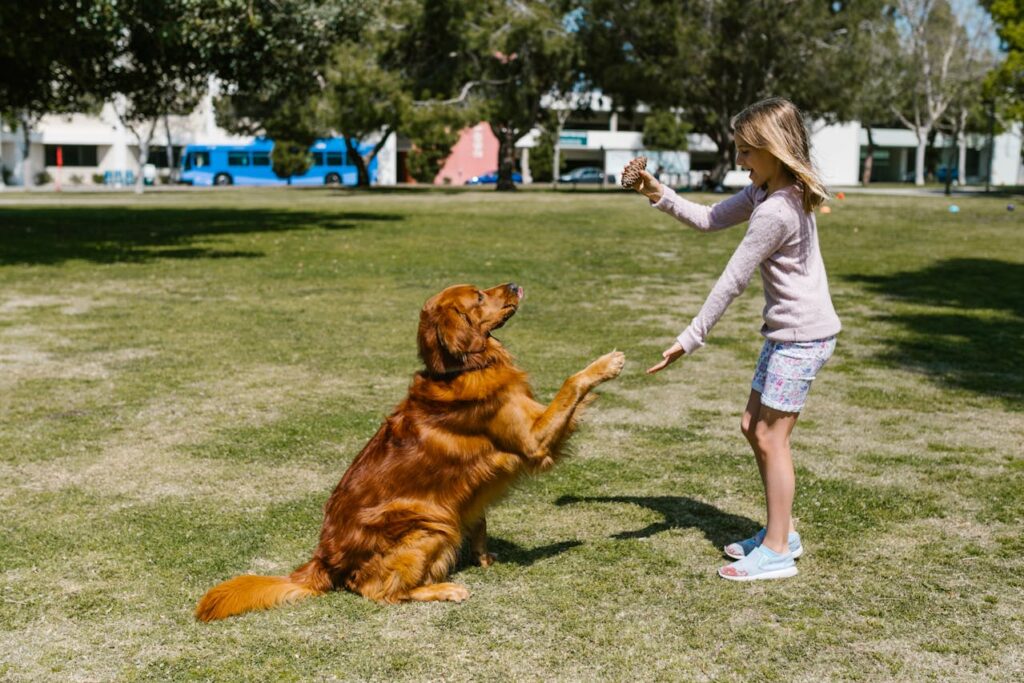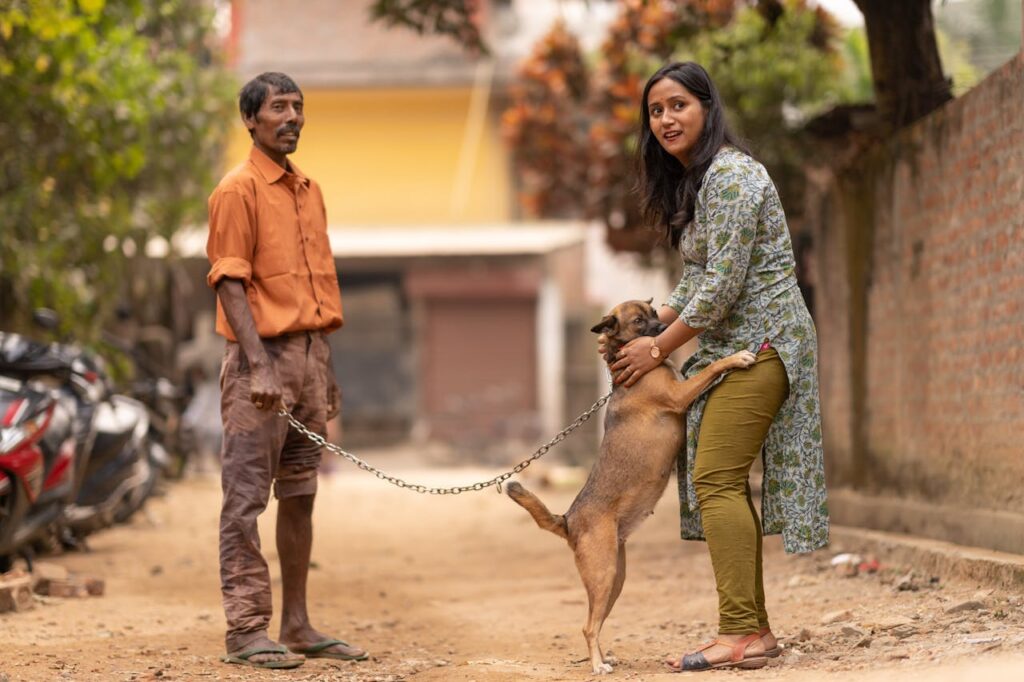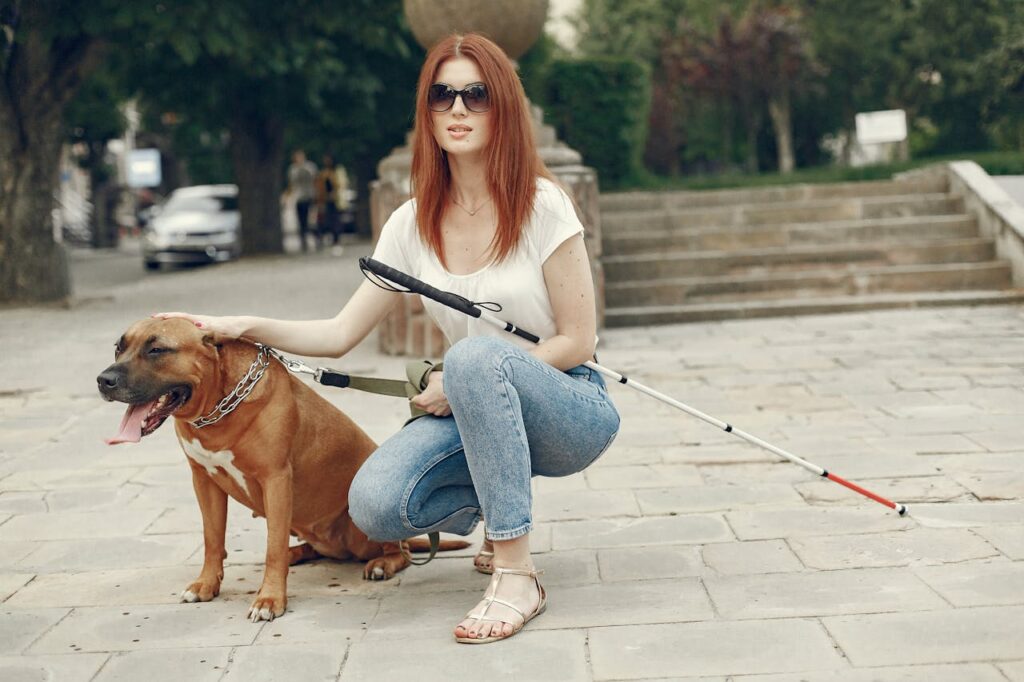Helping your dog stay calm in public isn’t just about avoiding chaos—it’s about building a trusting relationship that allows your dog to feel safe, secure, and confident, no matter where you go.
Whether you’re visiting a dog-friendly café, going on a walk through the neighborhood, or enjoying an outing at the park, training your dog to remain composed is a vital part of responsible pet ownership. If you’re wondering how to train your dog to be calm in public, you’re in the right place.
Many dogs find public settings overwhelming due to a combination of unfamiliar scents, sounds, people, and other animals.
For rescue dogs or pets that had limited socialization early in life, these experiences can trigger anxiety or fear-based behavior.
You might see signs such as leash pulling, barking, refusal to move, or excessive panting. The good news? You can absolutely help your dog become calmer through consistent, gentle training and a bit of patience.
Here’s a detailed, practical guide on how to train your dog to be calm in public, using strategies rooted in positivity and compassion.

1. Start with Calm Moments at Home
Before stepping out the front door, lay the groundwork at home. Clip the leash onto your dog and sit beside their bed or favorite blanket.
Wait until your dog naturally settles down. When they lie quietly or sit without tugging, whining, or seeking attention, reward them with a calm, quiet treat. Don’t make a big deal just a gentle pat and a bite-sized reward.
Over time, lengthen the period they must remain calm before receiving a treat. This small step teaches your dog that calmness not excitement leads to rewards, creating a foundational habit for public outings.
2. Ease Into Public Spaces Slowly
When you begin outdoor training, choose a quiet time and low-traffic location. Avoid busy streets, crowded parks, or dog-heavy areas at first. A calm environment makes it easier for your dog to focus and feel secure.
Begin with short walks around 10 to 15 minutes. Let your dog take the lead, allowing them to sniff and explore. Sniffing is not just a canine hobby it’s a calming, enriching activity that helps reduce anxiety. As your dog becomes more comfortable, you can gradually lengthen your outings or try more stimulating environments.
3. Reward Calm Behavior on Walks
When your dog walks nicely on a loose leash, avoids lunging or barking, or simply looks around without becoming reactive, reward this behavior.
Use soft treats or a favorite toy as a reward. If your dog is more scent-driven, encourage them to sniff an interesting spot as a “treat.”
Pair the reward with calm praise. A simple “good job” in a relaxed tone reinforces that they’re doing something right.
Remember, your energy influences theirs, if you’re relaxed, your dog is more likely to mirror that state.

4. Introduce Controlled Social Situations
Introduce your dog to other calm dogs in a safe, neutral space. Begin at a distance and watch their body language closely.
If your dog remains relaxed, allow them to inch closer. Keep the leash loose to prevent tension from traveling down to your dog.
Also, expose them to friendly humans. Invite friends over to say hello or offer treats, reinforcing that new people aren’t a threat.
These interactions help build your dog’s confidence around unfamiliar faces and dogs.
5. Use Positive Distractions
When you’re out and about, keep a few tools handy. Chew toys, puzzle toys, or treat-dispensing balls can serve as mental distractions.
If you’re sitting at an outdoor café or waiting at the vet, these toys can focus your dog’s energy and reduce restlessness.
6. Teach Basic Commands for Better Control
Simple commands like “sit,” “stay,” “leave it,” and “come” can make a world of difference in public.
Practice these commands at home first. Once your dog responds reliably, try them in gradually busier environments.
A solid “sit” command can keep your dog grounded when you pass another dog. A confident “stay” can help your dog remain calm in crowded areas. Practice these daily until they become second nature.

7. Practice the “Jolly Routine”
When you sense your dog getting anxious in public, try the “jolly routine.” This involves you acting relaxed, using a cheerful tone, and moving in a loose, carefree way.
Say something upbeat in a happy voice, smile, and gently guide your dog away from the trigger. This helps your dog learn that the situation isn’t threatening if you’re happy, it must be safe.
8. Don’t Skip Daily Exercise
Dogs with built-up energy often display anxious or reactive behavior. Make sure your dog gets adequate physical and mental stimulation daily. A tired dog is usually a calm dog.
Incorporate a mix of physical play (fetch, tug, running) and mental activities (training sessions, puzzle games). This helps your dog stay balanced, which in turn improves their public behavior.
9. Enroll in Obedience Classes
If you’re struggling, don’t hesitate to seek professional help. Obedience classes provide structured environments where your dog can learn to interact with others under expert supervision. Trainers often use group settings to teach dogs how to behave despite distractions.
These classes also boost your confidence as a handler, equipping you with techniques to manage tough situations.

10. Keep Your Cool and Stay Consistent
Training your dog to be calm in public doesn’t happen overnight. There will be setbacks—moments when your dog barks, pulls, or freezes. The key is to remain calm, patient, and persistent.
Avoid punishing your dog for anxiety-driven behavior. Instead, redirect their focus, reward their successes, and always remain consistent.
Over time, your dog will begin to understand that public outings aren’t scary—they’re just another part of life.

Final Thoughts
let’s finally answer the question as How to Train Your Dog To Be Calm in Public. In fact every dog has a unique personality and history, and some may take longer than others to adjust to public settings.
Especially if your dog experienced trauma or missed early socialization, progress might be slower. But with love, repetition, and the right tools, even the most nervous dogs can learn to feel safe and composed.
If you’re ever concerned that your dog’s fear or stress might stem from deeper issues, don’t hesitate to consult a veterinarian or animal behaviorist. They can help rule out medical causes and offer tailored solutions.
Training your dog to be calm in public is more than just obedience—it’s about helping your furry friend feel safe and confident in the big, bustling world around them.
Stick with it, celebrate the small wins, and you’ll get there together.
Related Posts:
How to Prevent Your Dog from Chasing Your Cat? Proven techniques
Why Do Small Dogs Bark So Much? lets explore the reasons
